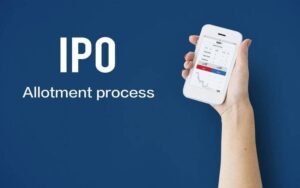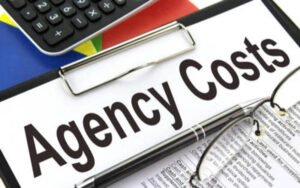What is the process of deciding to buy?
There are steps a customer takes before they decide to buy a product or service. This is called the buying decision process or customer decision path. The buying decision process is involved in many fields, from retail to eCommerce. There are three parts to this journey: before the purchase, during the purchase, and after the purchase.
Many things can affect the decision to buy. Here are some of these factors:
- Things about the person, like their age, gender, habits, and personality
- Things that affect our minds, like our drives, thoughts, feelings, and beliefs
- Things like family, friends, society, and peer groups
- Conditions like time, place, conditions, and availability
Customers also decide what to buy based on things linked to the business and the product, such as brand loyalty, marketing campaigns, the sales process, and pricing strategies.
The buying choice process may look easy, but it’s a complicated, strategic, and interactive one that helps a business make more money, sell more, and be more profitable.
Synonyms
- buyer decision process
- consumer decision-making process
- customer decision journey
- buying journey
The Steps People Take Before Making a Purchase Choice
Making a buying choice isn’t always straightforward; it changes over time as customers’ buying habits change. Companies can lessen and benefit from these differences in buying habits if they understand the buyer’s journey. Businesses can make the most money by studying and collecting information about how customers decide what to buy and how each step of the buying journey influences them to make a choice.
The buying process is broken down into five steps.
Stage 1: Needs and Wants
The first and most important thing a potential customer does when making a choice is to list their needs. Two main things affect the customer’s needs: internal and external stimuli. Businesses that want to make this part of the buying process go more smoothly should help potential customers figure out what they need. Companies can better understand what their customers want by gathering information through market research, interviews, polls, and focus groups.
Step 2: Look for information
At this point, people want to make their choices after realizing they have a problem or need. During the information search stage, people look for information about a product or service. They could talk to family and friends, look online, read reviews, or go to a shop to do this. This is when customers are trying to figure out what they want and what choices they have.
At this point, businesses can change how customers act by running ads and social media campaigns and ensuring their website information is SEO-friendly.
Step 3: Look at the options available
Consumers will move on to the review of alternatives stage after gathering information. It’s up to them to decide which choice is best for them. They might think about things like price, quality, or benefits.
Businesses can change how people act at this stage of the buying decision process by telling them about the goods or services they offer. Different marketing activities, like ads and product demos, can help. The business wants to convince customers that its goods or services are the best choice. This is why companies must give correct and fair details about their goods or services at this stage. Customers are more likely to choose their company’s goods or services over their competitors if they do this.
Stage 4: Making a purchase decision
People decide which product or service they want to buy in the purchasing decision stage of the buying decision process. Businesses can affect this step by giving customers reviews, thorough descriptions, and product price information to help them compare and pick the best one. Businesses can increase their chances of making a sale by helping customers understand their choices and make intelligent choices.
Stage 5: After the purchase
Lastly, the stage after the purchase helps build company loyalty and business through word of mouth. Post-purchase is when people use the product or service, think about it, and decide if they are happy with it and would suggest it to others.
There are several ways for businesses to affect buyers after they’ve bought something. First, businesses can ask happy customers to write good reviews about their goods or services. This spreads the word about the business and makes social proof that can persuade other people to buy.
Second, companies can reward customers who buy from them repeatedly by offering deals or loyalty programs. Third, businesses can stay in touch with customers by calling, emailing, or surveying them after buying something. Businesses can build strong ties with their customers and get them to stick with them by staying in touch.
Fourth, companies can back up their goods or services with a warranty or guarantee. This gives buyers peace of mind and shows that the business is sure of what it’s selling. Finally, companies can ask their clients for feedback and use it to improve their goods and services. This helps businesses keep improving and ensures that customers are always happy with what they buy.
Using these methods, businesses can affect customers after they buy something and turn them into loyal, happy customers.
Why price is essential when making a buying decision
People who might buy something want the best goods or services from a business that meets their needs. Potential buyers use price as one of the main ways to judge the value of a product.
There are several reasons why price is one of the most critical factors in deciding what to buy:
- People who buy things want to get the most for their money. To get the best deal, they look at different prices.
- Price can show quality. Regarding quality, a higher price may mean the item is better than a lower price.
- Prices can change how much something is worth.
People might be ready to pay more for a product if they think it is valuable.
Setting prices for goods is not easy because there are many things to consider. Businesses need to think about how essential prices are in the buying process when they set their prices. They must find a good mix between making a profit and charging enough to get people to buy. Brands that set prices too high might not get as many sales as possible. But if they set their prices too low, they might not make enough money to keep their business going. Companies need to find the right mix to be successful.
What role does the decision process play in the B2B buying process?
The B2B buying journey is more complicated than the B2C buying journey shown above. It has some slightly different parts and features. A significant difference between the B2B buyer journey and the B2C buyer journey is the length of the sales cycle. Buying something from a business can take days or months, depending on how complicated the deal is.
Leaders in marketing and sales need to know how B2B buyers make decisions so they can make sure their marketing and sales strategies meet those needs. The B2B buying decision process is much like the B2C customer decision journey, but there are minor changes.
Stage 1: The Stage of Finding Out
The possible customer doesn’t know about your business yet. Instead, they know there is a problem and are trying to find a way to fix it. Marketing is essential to let people know your product can help them solve their business problems. At this time, sales teams are also critical because they can use buyer behavior signals to find good opportunities and contact potential buyers.
Stage 2: The Stage of Evaluation
When a business knows what it needs and has done preliminary research, it moves on to the evaluation part of the business-to-business buying journey. During this step, people or businesses look more closely at their choices and compare goods and services.
During the review stage, businesses will look at things like price, quality, features, and performance. Also, they will check to see if a service or product meets their specific wants. At this point, companies usually ask providers for quotes or proposals.
The evaluation stage can last a long time, and people who make decisions may ask other people, like workers or consultants, for their thoughts. A trial or pilot may be something a business wants to do to try a product or service before making a final choice.
Stage 3: Making a choice and buying
During this stage of the B2B buyer journey, the customer looks at different goods and services and then buys one. The decision stage is an integral part of the B2B buying process, and companies need to know what buyers want now. Companies can ensure they give buyers the information and tools they need to choose by understanding their needs at this stage. Customers can choose between your product and your competitors with the help of reviews, demos, recommendations, price quotes, and sales proposals.
The fourth stage is loyalty.
In the B2B buying process, the loyalty stage is when a customer is fully committed to a product or service and will continue to use it, usually for a long time. There is little to no customer turnover at this stage because customers are happy. Businesses must first offer a great product or service that meets the needs of their target market if they want to keep users. They also need to build strong relationships with customers and give great help. Customers can stay interested in a brand by giving them discounts, usage-based prices, loyalty programs, and ways to give feedback.



































